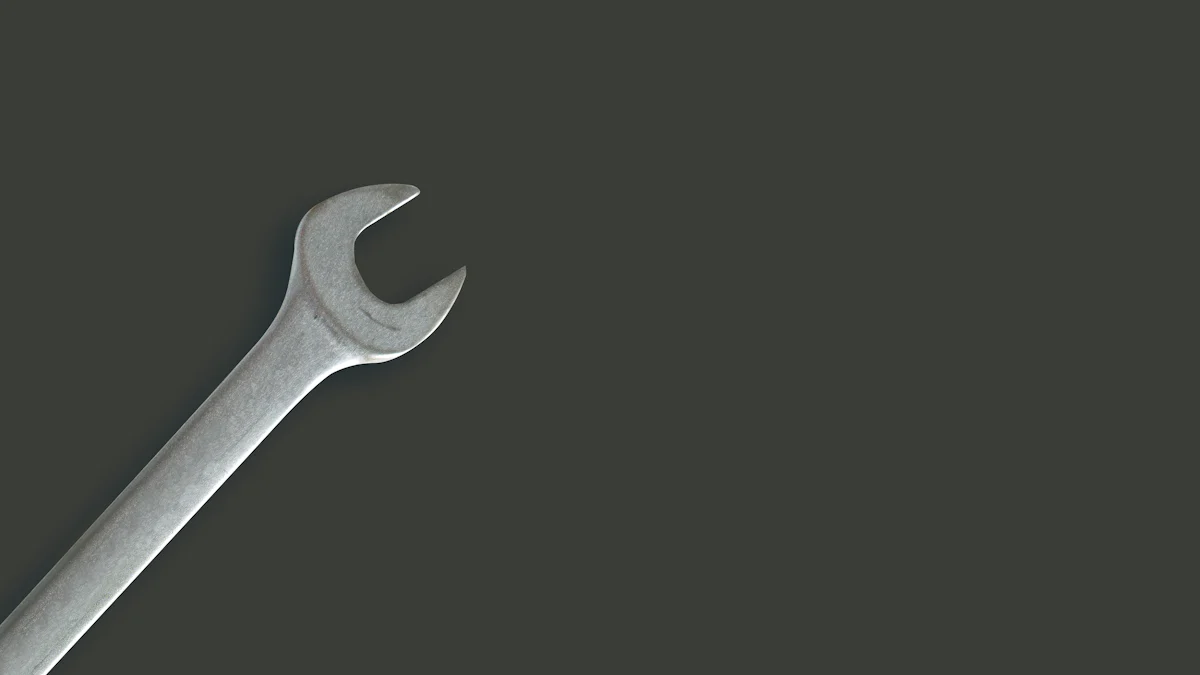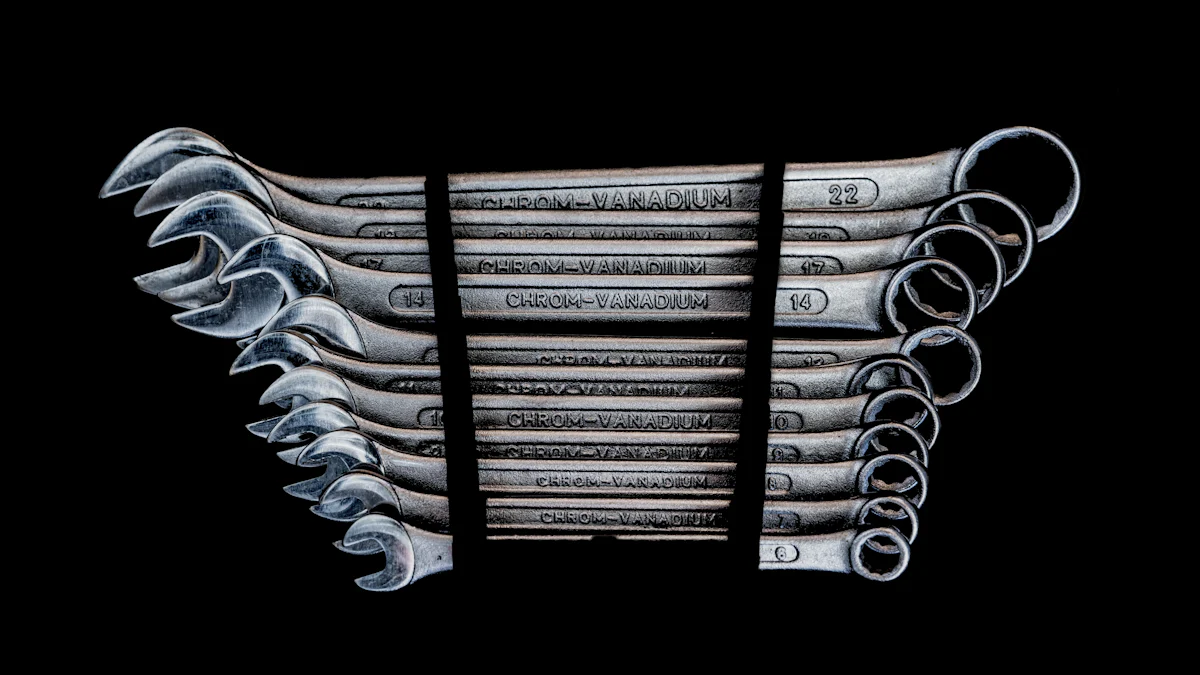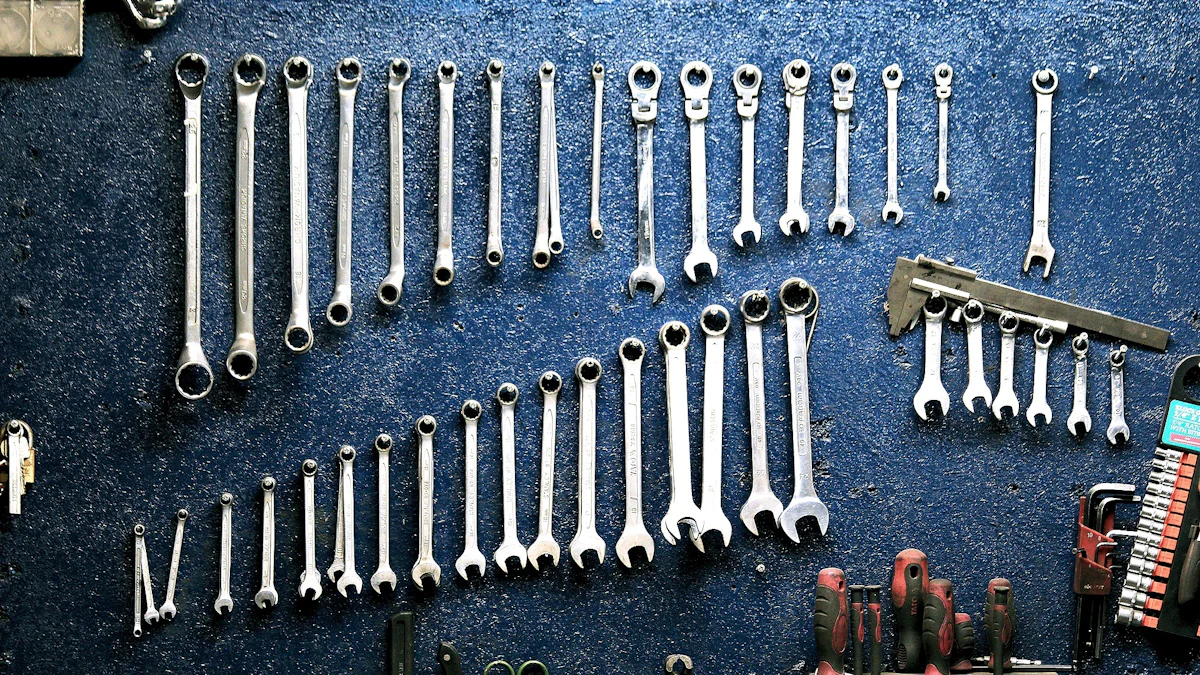
A spanner serves as a crucial tool in your toolkit. The definition of spanner refers to a hand-held device designed to provide grip and tighten or loosen fasteners. Spanners offer precise and controlled tightening, reducing the risk of damage to fasteners and components. This tool ensures operations proceed with accuracy and care. Proper maintenance and correct usage can extend the lifespan of spanner tools significantly. You will find spanners essential for various mechanical tasks, making them indispensable for both professionals and DIY enthusiasts.
Definition of Spanner
Understanding the Definition of Spanner
A spanner serves as an essential tool in various mechanical and DIY tasks. The definition of spanner refers to a hand-held device specifically designed to tighten or loosen nuts, bolts, and other fasteners. Each spanner comes in a specific size, making it perfect for tasks that require precision. Different shapes and sizes of spanners allow you to tackle a wide range of fasteners. Whether you need to reach tight spaces or require a more secure grip, a spanner is designed to meet your needs.
General Purpose of a Spanner
The primary purpose of a spanner involves providing grip and applying torque to fasteners. This tool ensures operations proceed with accuracy and care. Spanners offer precise and controlled tightening, reducing the risk of damage to fasteners and components. You will find spanners indispensable for both professionals and DIY enthusiasts. Proper maintenance and correct usage can extend the lifespan of spanner tools significantly.
Product Information:
- Open-End Spanners: Ideal for nuts and bolts.
- Box-End Spanners: Provide a more secure grip.
- Combination Spanners: Offer flexibility in use.
- Adjustable Spanners: Adapt to different sizes easily.
Understanding the basics of spanner tools is crucial for their effective use and maintenance. These versatile tools are as necessary as hammers and screwdrivers in any toolkit. A spanner, also known as a wrench, is an essential piece of equipment for any job that requires fastening or loosening nuts, bolts, and other fasteners.
Types of Spanners

Understanding the different types of spanners will help you choose the right tool for your tasks. Each type of spanner has unique characteristics and uses. Knowing these details ensures you select the most effective tool for your needs.
Open-End Spanners
Characteristics
Open-end spanners feature a U-shaped opening that grips two opposite sides of a fastener. The design allows quick and easy access to nuts and bolts. You can use open-end spanners in tight spaces where other tools might not fit. The open-end design provides flexibility and ease of use.
Common Uses
Open-end spanners work well for tasks requiring frequent repositioning. You will find them useful in automotive repairs and plumbing jobs. These spanners excel in situations where speed and accessibility are crucial. The open-end design allows you to work efficiently without removing the spanner from the fastener.
Box-End Spanners
Characteristics
Box-end spanners have a closed loop at each end, providing a secure grip on fasteners. The loop fits snugly around nuts and bolts, reducing the risk of slipping. This design offers more torque and control compared to open-end spanners. Box-end spanners often come with offset handles for better leverage.
Common Uses
Box-end spanners are ideal for heavy-duty tasks requiring high torque. You will find them essential in mechanical and construction work. The secure grip makes them suitable for loosening stubborn fasteners. Box-end spanners provide reliability and strength for demanding applications.
Combination Spanners
Characteristics
Combination spanners offer the best of both worlds with an open-end on one side and a box-end on the other. This dual functionality provides versatility and convenience. You can switch between ends without changing tools. Combination spanners save time and space in your toolkit.
Common Uses
Combination spanners are perfect for general maintenance and repair tasks. You will find them useful in various settings, from home repairs to professional workshops. The dual design allows you to tackle different fasteners with ease. Combination spanners enhance efficiency and adaptability in your work.
Expert Testimony:
Maintenance Expert: “Disassembling and refitting the components should be done carefully to avoid damage. Although make-shift spanners are feasible and may seem to be cost-effective for an occasional job, using a proper tool increases the likelihood of success and reduces the risk of inadvertent damage.”
Adjustable Spanners
Characteristics
Adjustable spanners offer versatility in your toolkit. The adjustable jaw allows you to fit various sizes of fasteners. You can easily modify the jaw width by turning a screw mechanism. This feature provides flexibility when working with different fastener sizes. Adjustable spanners usually have a smooth jaw surface. This design helps prevent damage to fasteners during use. The handle often features a comfortable grip for ease of use. You will find adjustable spanners made from durable materials like steel. This ensures longevity and reliability in demanding tasks.
Common Uses
Adjustable spanners excel in situations where you encounter multiple fastener sizes. You can use them in plumbing, automotive repairs, and general maintenance. The ability to adjust the jaw width makes them ideal for quick tasks. You can rely on adjustable spanners for both professional and DIY projects. These tools provide a convenient solution when you need to switch between different fasteners. Maintenance Expert emphasizes the importance of using proper tools. Using adjustable spanners reduces the risk of damage to components. A proper tool increases the likelihood of success in your tasks. You will find adjustable spanners indispensable in any comprehensive toolkit.
Primary Function of Spanners
Providing Grip
How Spanners Provide Grip
Spanners provide a firm grip on fasteners. The design of spanners allows them to hold nuts and bolts securely. The open-end spanner features a U-shaped opening that grips two opposite sides of a fastener. This design ensures quick access to fasteners. Box-end spanners have a closed loop that fits snugly around fasteners. This loop reduces the risk of slipping. Adjustable spanners offer versatility with a movable jaw. This jaw can be widened or narrowed to fit different sizes of fasteners. The ability to adjust enhances the grip on various fasteners.
Importance of Grip in Tool Use
A secure grip is crucial in tool use. A strong grip prevents damage to fasteners. Proper grip ensures precision and control during tasks. Spanners with a good grip reduce the risk of accidents. A reliable grip enhances the efficiency of mechanical tasks. The grip provided by spanners makes them indispensable for professionals and DIY enthusiasts. A firm grip allows you to work confidently on various projects.
Applying Torque
Explanation of Torque
Torque refers to the rotational force applied to an object. Torque plays a vital role in tightening or loosening fasteners. The amount of torque determines how securely a fastener holds components together. Proper torque application ensures the stability of assembled parts. Torque is measured in units like Newton-meters (Nm) or foot-pounds (ft-lbs). Understanding torque helps in selecting the right tool for the job.
Role of Spanners in Applying Torque
Spanners play a key role in applying torque to fasteners. The design of spanners allows for precise torque application. Open-end spanners provide quick access to fasteners, making them ideal for tasks requiring frequent repositioning. Box-end spanners offer more torque and control due to their closed-loop design. Combination spanners combine the features of both open-end and box-end spanners. Adjustable spanners adapt to different sizes, providing flexibility in torque application. The ability to apply the right amount of torque makes spanners essential tools in any toolkit.
Practical Applications of Spanners

Spanners play a vital role in various fields. The versatility and functionality of spanners make them indispensable tools for both professionals and hobbyists. Understanding the practical applications of spanners helps you appreciate their value in everyday tasks.
Use in Agriculture
Specific Tasks in Agriculture
Spanners prove essential in agriculture. Farmers use spanners for machinery maintenance and repairs. Tractors and other equipment require regular tightening of nuts and bolts. Spanners offer precise control, ensuring machinery operates smoothly. The adjustable jaws of spanners accommodate fasteners of different sizes. This flexibility proves crucial in handling diverse agricultural equipment.
Benefits of Using Spanners in Agriculture
Using spanners in agriculture offers several benefits. Farmers experience reduced risk of damage to machinery components. The ergonomic handles of spanners minimize user fatigue during prolonged use. Spanners enhance safety by providing a secure grip on fasteners. The durability of spanners ensures they withstand harsh agricultural environments. These tools contribute to efficient farm operations by maintaining equipment reliability.
Use in DIY Tasks
Common DIY Projects
Spanners serve as essential tools in DIY projects. Home repairs often involve tasks like assembling furniture or fixing plumbing issues. Spanners provide the necessary grip and torque for these tasks. The ability to adjust spanner jaws allows you to work with various fastener sizes. DIY enthusiasts rely on spanners for tasks requiring precision and control.
Advantages of Spanners in DIY
Spanners offer numerous advantages in DIY tasks. The ergonomic design reduces strain on your hands during extended use. Spanners ensure precise tightening, preventing damage to components. The durability of spanners makes them reliable tools for repeated use. You can complete projects efficiently with the right spanner in your toolkit. The versatility of spanners makes them valuable assets for any DIY enthusiast.
Spanners serve as essential tools in both mechanical and DIY tasks. These tools provide grip and apply torque, ensuring precise fastening. Various types of spanners cater to different needs, enhancing versatility. Spanners prove indispensable in agriculture, construction, and home projects. Proper maintenance ensures longevity and optimal performance. Understanding the right spanner for each task is crucial. Spanner wrenches offer reliability and efficiency across various settings. The versatility and necessity of spanners make them valuable assets in any toolkit.
